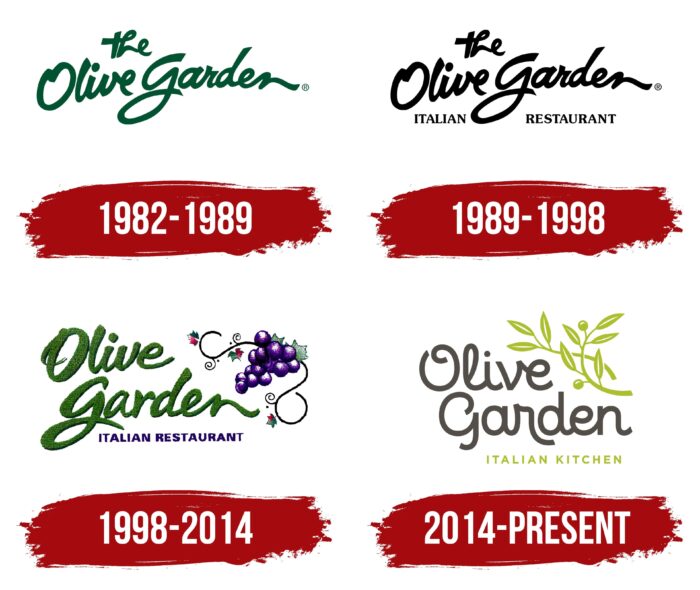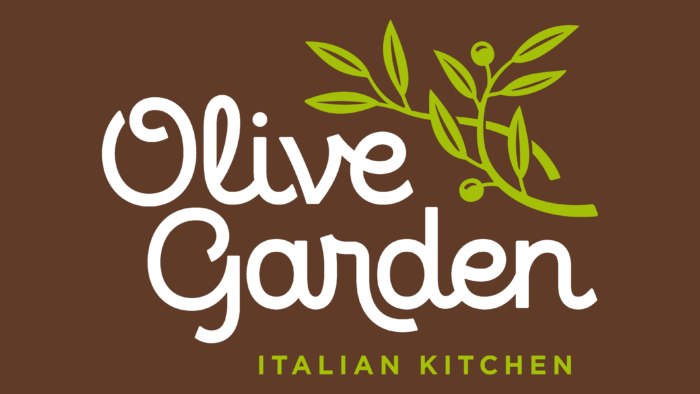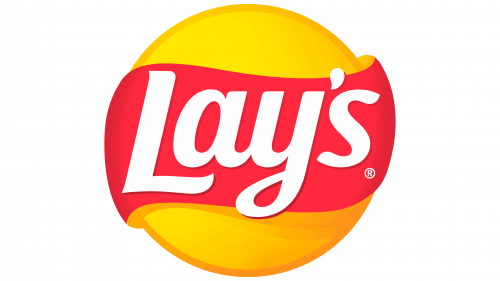The Olive Garden logo looks hospitable and evokes light, fragrant olive oil, pasta, and other Italian dishes. The emblem invites you to sit in the cozy shade of the restaurant and have a bite to eat.
Olive Garden: Brand overview
Olive Garden is an informal United States restaurant chain focusing on American-Italian cuisine. She serves steaks, salads, pasta, and breadsticks, with which she associates the main menu. In addition, the company is a subsidiary of Darden Restaurants, headquartered in Orange County, Florida, and operates 900 food service outlets worldwide. Its branded establishments are in the United States, Italy, Canada, Brazil, Mexico, Kuwait, Ecuador, Slovakia, the Philippines, and other parts of the world. The institution was formed at the end of 1982 on the initiative of entrepreneur Bill Darden.
In 1982, Olive Garden began in Orlando, Florida, with a vision from Joe Lee of General Mills. The goal was simple: make Italian food affordable and welcoming, like a meal with family. This idea quickly became popular, sparking rapid growth across the U.S. in the 1980s and 1990s. Olive Garden was celebrated for its menu, rich in fresh ingredients and classic dishes such as Zuppa Toscana, Fettuccine Alfredo, and unlimited breadsticks.
By the 1990s and into the 2000s, Olive Garden’s memorable advertising and the slogan “When you’re here, you’re family” resonated deeply, making it a favorite for various gatherings. In 1995, joining Darden Restaurants helped strengthen its industry presence.
The 2010s saw Olive Garden refreshing its brand to keep up with changing consumer preferences. This included introducing lighter menu options in 2014 and updating the restaurant design for a more contemporary feel. Despite these changes, Olive Garden offered great value through its endless salad, soup, and breadsticks.
The 2020 pandemic brought challenges, leading to a temporary shift to delivery and takeout only. Olive Garden adapted by offering family meal deals and contactless delivery. As restrictions were lifted, the restaurants welcomed guests back, focusing on safety and hospitality.
Olive Garden operates over 900 locations in North America, maintaining its role as a beloved destination for Italian cuisine. Its commitment to hospitality, hearty portions, and appeal to a wide audience keeps it central in American dining culture.
Olive Garden’s journey from a single restaurant in 1982 to a cultural staple highlights its enduring appeal. It continues to evolve, introducing new menu items and enhancing the guest experience while staying true to its mission of bringing people together over enjoyable Italian meals.
Meaning and History
Olive Garden was originally a division of General Mills. Its first location appeared in the city of Orlando in 1982. By 1989, it was already a chain with 145 catering establishments. This made it the fastest-growing of all the sub-brands, which is why it was eventually spun off as a brand in its own right. The company’s popularity increased monthly, and its sales volume gradually reached the indicators of a competing structure – Red Lobster. Thus, it has become a leader among US full-service restaurant chains. Italian cuisine has always remained her basic specialty.
After several years of decline at the beginning of the millennium (the 2000s), the Olive Garden has risen and recovered. She opened new locations, teamed up with another division, arranged promotions with great deals, actively advertised herself, and, as a result, regained her former popularity. They began to visit her more often, get to know her better, and even mention them on the music track (performer Taylor Swift).
As for the identity, the restaurateurs used the old sign, which was approved at the beginning of the emergence of food outlets. For a redesign, they change its style while maintaining the familiar structure. In general, the brand has four logos.
What is Olive Garden?
Olive Garden is one of the most successful brands in the food service industry. It originated in 1982 as a division of General Mills and since 1995 has been part of Darden Restaurants, Inc. It is now a popular U.S. restaurant chain serving casual Italian dishes adapted to American cuisine. It is famous not only for its logo but also for warm grissini, different types of pasta, numerous salads, soups, and steaks.
1982 – 1989
The company’s work started with a text logo. It was semi-coherent handwritten lettering, with only the first letters in the words “Olive” and “Garden” at a minimum distance. The rest had tight but smooth transitions. The article “the” was on the top line, and the main name of the restaurant chain was on the bottom line. The symbols were thick and careless as if written in a fit of emotion—however, as befits a purely Italian manner.
1989 – 1998
The next logo remained similar to the individual flourish but was recolored from green to black. At the bottom, the developers, this time, added a clarification – “Italian Restaurant” to show visitors the status of a catering establishment. The designers divided the phrase into two parts, placing one under the inscription “Olive” and the second – under “Garden.” The letters in the new text were small but in capitals and typed in block serif type.
1998 – 2014
In 1998, the company changed its name slightly, removing the article “the.” Of course, this was reflected in the emblem, but not dramatically, since it still had two lines left, occupied by the phrase “Olive Garden,” divided into two parts. The style of the inscription has also been preserved – an imitation of careless handwriting with a small italic. At the same time, the authors corrected the capital “O” and lowercase “v,” painted the name in olive color, removed the serifs from “Italian Restaurant,” and drew a grape brush. It was supposed to symbolize Italy (a wine-producing country). The cluster was in the upper right corner and was decorated with a vine with miniature carved leaves.
2014 – today
The current version of the logo has been completely changed—both in style and the number of elements. The emblem now contains two branches of an olive tree with fruits intertwined to the right of the word “Olive.” Below is the second part of the company name—”Garden.” Below is the phrase “Italian Kitchen,” which clarifies the restaurant chain’s menu. Designers lightened the green color, rounded the font, and straightened the font.
Olive Garden: Interesting Facts
Olive Garden is a popular American restaurant chain that serves Italian-American dishes. It’s known for its cozy dining atmosphere and has locations throughout the United States and other countries.
- Start and Ownership: It began in 1982 in Orlando, Florida, was started by General Mills, and is now under Darden Restaurants, one of the biggest restaurant companies globally.
- Growth: Olive Garden has grown from one restaurant in 1982 to over 800 locations worldwide, showing its broad appeal.
- Famous Promotions: Known for its “Never Ending Pasta Bowl” offer, Olive Garden lets customers enjoy unlimited pasta, soup or salad, and breadsticks, highlighting the brand’s focus on value and generosity.
- Training in Italy: Olive Garden says it has a Culinary Institute in Tuscany, Italy, to train its chefs and managers in authentic Italian cooking, aiming to provide genuine Italian menu items.
- Breadsticks Love: Its free, unlimited breadsticks are incredibly popular and are known for their soft, warm texture and garlic-butter flavor.
- Giving Back: The chain participates in community efforts, such as raising money for the Leukemia & Lymphoma Society with its “Pasta for Pennies” campaign and donating food to local food banks.
- Embracing Technology: Olive Garden has embraced digital ordering, a mobile app, and to-go services to meet customers’ changing needs, especially during the COVID-19 pandemic.
- Wine and Expertise: The restaurant boasts a selection of wines and has certified sommeliers at many locations to help pair wine with meals, enhancing the dining experience.
- Signature Dish: The “Tour of Italy” dish lets customers try three popular items—lasagna, chicken parmigiana, and fettuccine alfredo—on one plate, showcasing Olive Garden’s commitment to Italian hospitality and flavors.
- Menu Evolution: While staying true to Italian-American roots, Olive Garden regularly updates its menu with lighter, modern options, including gluten-free pasta and lower-calorie dishes, catering to various dietary needs and preferences.
Olive Garden stands out for its plentiful Italian-American meals, inviting atmosphere, and dedication to value and customer satisfaction, making it a favorite among families and food lovers.
Font and Colors
The history of modifications of the Olive Garden logo is, in fact, a refinement of the visual range presented in it. In the course of evolution, the elements improved and changed towards the Italian theme: at first, it was emphasized by the “emotional” handwriting, then by a grape brush, and at the end, by an olive branch. Everything was done to accurately convey the network’s name, as it was criticized for the artificial atmosphere of the Italian spirit. The basis for the updated identification mark was the graphic work of the Lippincott studio, which created logos for several well-known brands: Coca-Cola, Pizza Hut, Dell, Walmart, Delta Air Lines, Sprint, and others.
The emblem currently uses the Eldwin typeface from The Northern Block. In early versions, the inscription was made in an individual font—soft italics, imitating handwriting.
The original palette reflects the color indicated in the brand name – olive. At different times, it was either dark or light. The logos also feature black, purple, and white.
FAQ
What font is the Olive Garden logo?
The logo uses a font similar to Pacifico, chosen for its friendly and welcoming vibe. This font is part of Olive Garden’s larger plan to make customers feel at home, showing the restaurant as a place for families to enjoy good Italian food in a cozy setting. The handwritten style of the font adds to the relaxed, informal atmosphere the restaurant aims for. This kind of font choice is important for Olive Garden’s image. It tells customers they’re in for a pleasant dining experience, like eating in the Italian countryside.
Choosing an informal and fun font helps Olive Garden stand out as a welcoming place for delicious Italian meals and memorable times with loved ones. This careful font selection plays a big part in making Olive Garden a favored choice for casual dining, highlighting the brand’s focus on hospitality and the joy of eating together.
Is Olive Garden food from Italy?
Olive Garden is a popular restaurant chain in the United States that serves Italian-American cuisine. While it offers dishes inspired by traditional Italian recipes, the ingredients aren’t imported from Italy. Instead, Olive Garden blends American tastes with Italian cooking styles, creating appealing meals to a wide audience. This mix has made it a favorite spot for Italian-flavored dishes in a welcoming, family-friendly setting.
Owned by Darden Restaurants, Inc. and based in Orange County, Florida, Olive Garden’s menu features well-loved Italian foods like pasta, breadsticks, and salads. Some of these dishes have been tweaked to suit American preferences better. This combination of American and Italian influences has helped establish Olive Garden as a go-to place for enjoyable dining experiences. Although some ingredients reflect the influence of Italian regions, all the food is prepared and served in the U.S., making Olive Garden’s offerings Italian-American rather than traditionally Italian.
What is the meaning of the Olive Garden Logo?
The logo, featuring green olive branches with ripe olives, symbolizes the restaurant’s connection to Italian cuisine and its welcoming atmosphere. Olives, essential to Italian cooking, reflect the authentic tastes Olive Garden aims to offer. This imagery, iconic of the Mediterranean, also represents peace and goodwill, fitting Olive Garden’s aim to be a place for gatherings.
The green color of the olive branches emphasizes freshness and quality, aligning with Olive Garden’s commitment to using high-quality ingredients. This logo tells a story of Olive Garden’s Italian heritage, focuses on quality, and is dedicated to creating a friendly, family-like dining experience. Olive Garden’s logo effectively communicates its mission to bring Italian flavors to its customers in a warm, inviting setting.
What does the logo symbolize, the Olive Garden Logo?
The logo symbolizes the restaurant’s fresh start and deeply connects with Italian cuisine’s traditions and the Mediterranean’s natural beauty. Central to the logo are olive tree branches, emphasizing the olive’s crucial role in Italian food and culture. The olive symbolizes peace, longevity, and prosperity, values Olive Garden wants to share with its customers.
The logo’s design, with its elegant, curling letters, resembles growing young plants, linking to themes of freshness, growth, and the lively essence of the Mediterranean. This choice reflects Olive Garden’s goal to offer fresh, quality dishes.
Why are there grapes on the Olive Garden logo?
From 1998 to 2014, the logo included a bunch of grapes, which might have seemed out of place to some. This design choice was deliberate, meant to showcase Olive Garden’s strong ties to Italian culture and food. Italy is famous for its vineyards and winemaking tradition, key elements of Italian dining. Adding grapes to its logo, Olive Garden wanted to highlight its effort to offer true Italian tastes and customs in America. The grapes next to the ‘Olive Garden’ name made the logo stand out, even if it seemed unusual. This was a thoughtful move to make the logo both eye-catching and unforgettable.
Why did Olive Garden change its logo?
In 2015, Olive Garden underwent a significant rebranding, including a new logo, to update its image and remove past issues that might have hurt its reputation. The main reason for this change was to make Olive Garden appealing again and boost sales, following a more than 10% drop in customer visits. The new logo aimed to mark a fresh start for the restaurant, drawing people back in. This effort was about making Olive Garden competitive again and securing its place in the fast-paced restaurant world.
What is the slogan for Olive Garden?
For fifteen years, Olive Garden embraced the heartwarming slogan “When You’re Here, You’re Family.” This slogan effectively communicated the restaurant’s commitment to creating a warm, welcoming dining environment where customers are treated with the care and affection usually reserved for family members. It highlighted Olive Garden’s aim to make every guest feel at home, underscoring the importance of hospitality and a friendly atmosphere in their establishments.
In 2012, Olive Garden adopted a new slogan, transitioning to “Go Olive Garden.” This change aimed to refresh the brand’s image and perhaps connect with customers in a new way. Despite this shift in messaging, the change in slogan did not accompany a change in the restaurant’s logo. The new motto invited customers to choose Olive Garden as their go-to dining option, emphasizing the action of visiting and experiencing what it offers. It’s worth noting that the original slogan’s sentiment of warmth and family-like hospitality remains a core part of Olive Garden’s brand identity, even as it evolves to meet changing market dynamics and customer preferences.
Who designed the Olive Garden logo?
The restaurant’s design team created the new logo, working with Lippincott, a well-known design firm from New York. Lippincott has been around since 1943, and it was started by J. Gordon Lippincott and Donald R. Dohner, who were teachers. They’re known for helping brands look good and stand out.
Working with Lippincott, Olive Garden wanted to update its logo to keep up with the times and stay interesting to customers. This team-up meant combining Olive Garden’s ideas with Lippincott’s experience to make a logo that shows what Olive Garden stands for—its values, tradition, and plans for the future.
The new logo is about keeping Olive Garden looking fresh and appealing in a market with a lot of competition. By choosing Lippincott, Olive Garden used its long history of knowing how to make brands look their best. This new logo shows how Olive Garden and Lippincott worked well together. They’ve updated Olive Garden’s image, ensuring the restaurant remains a favorite.










